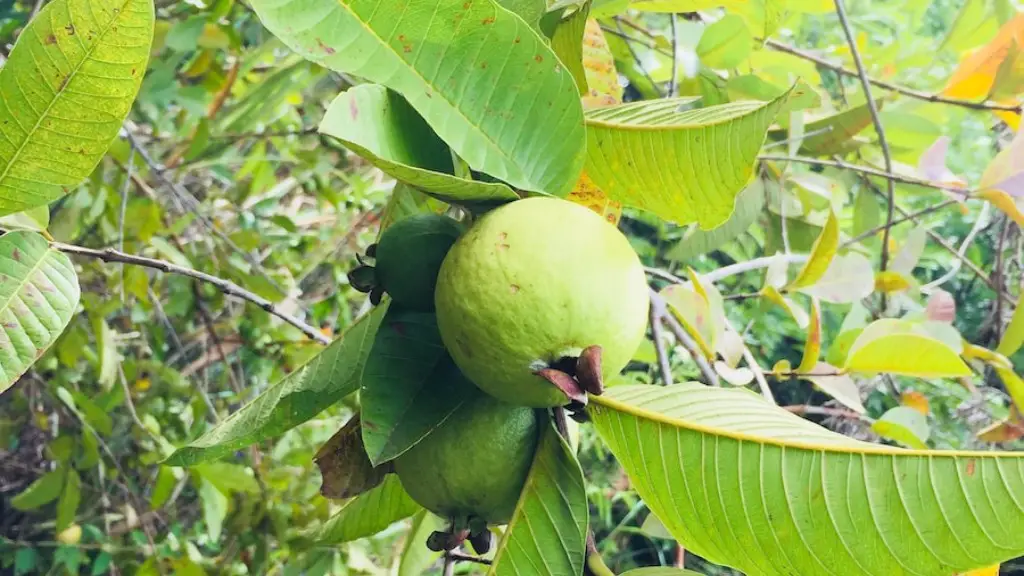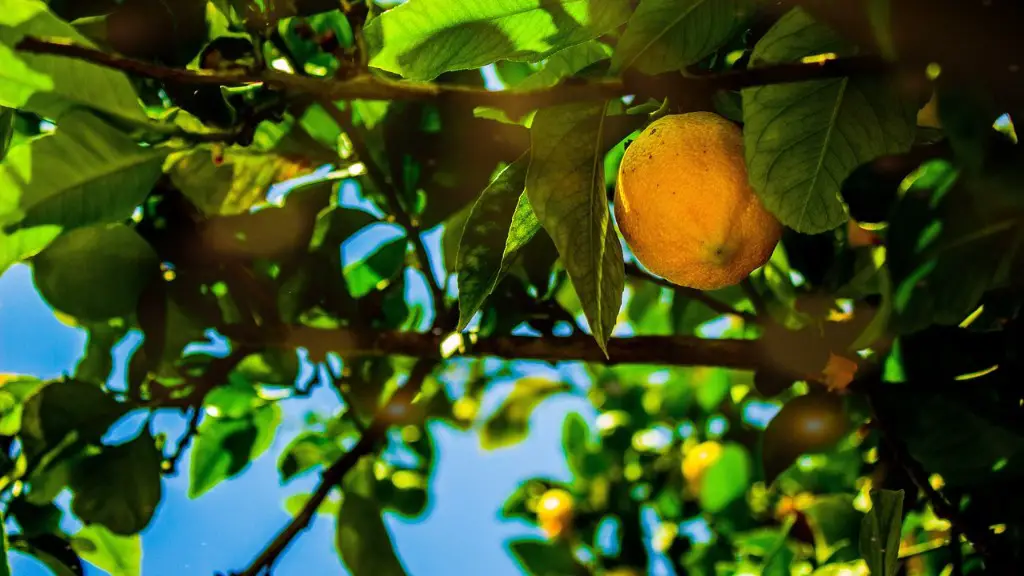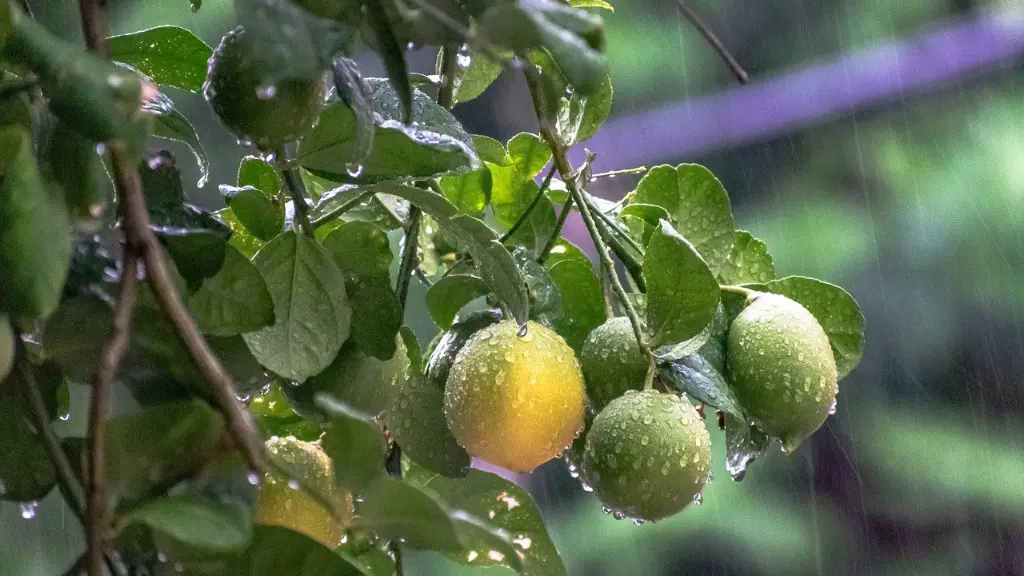Apples from trees can be a great snack and a wonderful addition to many recipes. Knowing when to pick apples from a tree is key to ensuring that you have the perfect apple for whatever you are creating. Generally, apples ripen starting in late summer and into early fall, with some varieties ripening earlier and others later. There are several factors to consider when harvesting apples from a tree, including the color, the size, the smell, and the taste.
The color of the apple can be an indicator of ripening. Apples start off green and will eventually lighten and turn yellow, pink, or red. Even within a variety, there can be a range of colors as apples mature. Additionally, some varieties tend to ripen from the inside out which can make them look ripe from the outside while still being tart and under-ripe.
The size of the apple is another indication of ripeness. Apples will tend to swell when ripe and may get as much as double their prior size. When the apple gets to its peak size, it will be ripe and ready to harvest. Apples can also change shape when ripe and become slightly more round and less elongated.
Two other natural indicators of ripeness are smell and taste. Ripe apples will usually smell sweet and be pleasant to smell. Similarly, a ripe apple should taste sweet when bitten into, over-ripe apples are usually softer and may even taste slightly sour. A good rule of thumb is to wait until an apple tastes delicious before harvesting.
Picking apples can vary based on the variety. Some apples may need to be gently twisted to be harvested, whereas others may only need a slight pull. It’s important to be mindful when choosing when to pick the fruit from the tree in order to avoid damaging the tree or any of the other fruit hanging from it.
Typically, apples should be harvested when they are fully ripe as this will yield a sweeter, juicier, and better tasting fruit. Ideally, before harvesting, it’s important to observe the apples to ensure that they are ready to be picked from the tree. Following these steps should yield the perfect apple for whatever you are creating.
When to Pick Apples From a Tree- When is the Right Time?
When it comes to picking apples, timing is key- picking the apples too soon can leave you with fruit that is not as sweet or tasty, while waiting too long can result in bruised or over-ripe fruit. Knowing when the right time to pick apples is essential to getting the best apples for your recipes.
In general, apples should be ready to pick when they are fully mature and when they are at their peak flavor. Usually they will be large, the color of the apple will have changed from the original bottom to match the top, and when lightly squeezed the apple should feel slightly soft. To be sure you have picked ripe apples, cut open one and check for sweetness, color, and texture. That will give you an indication of the maturity of the other apples as well.
To determine exactly when the apples are ripe, it is important to know the variety you are harvesting. Many apples take just a few weeks from bloom to maturity so it is important to know the approximate time of maturity of the variety you are growing. You can also inspect the apples, paying close attention to color, size, shape, and flavor to help determine the optimal time to pick.
Ultimately, observing the apples over time and knowing their approximate maturity date is the best way to determine when to pick apples. Harvesting apples before they are fully mature can result in unripe, tasteless apples and waiting too long can result in large, over-ripe, bruised apples.
Why is it Important to Pick Apples at the Right Time?
Picking apples is an important part of the harvest and can make or break your apple recipes. Picking the perfect apple requires patience and practice, but the reward is well worth the effort.
The quality of the apples you pick directly impacts the taste and texture of your final product- unripe apples will be tart and pucker your mouth, whereas ripe and over-ripe apples can be soft and mushy. Knowing when to pick apples from the tree will ensure that you have flavorful, perfectly ripe apples for whatever recipe you’re making.
Picking apples is also important for the health of the tree. If apples are picked before they are ripe, they can stunt the maturation of the other apples, affect their quality and reduce the size of the overall fruit yield. Similarly, waiting too long to pick the apples can cause them to become over-ripe and rot while still on the tree.
Apples can be a great snack and a wonderful addition to many recipes. Knowing when to pick apples from the tree is key to ensure that you have the perfect apple to complete your recipe. As with most things in life, patience is the key- observe the apples and know the approximate maturity date of the variety you are growing to get the perfect apples for your needs.
Is it Best to Pick Apples Early or Late?
This depends on the variety of apple that you are harvesting. Some varieties of apples, such as Honeycrisp, can benefit from an early harvest while others, such as McIntosh, may be better when picked a bit later. To be sure that you are picking the apples at the right time, observe the apples and use the tips mentioned above to determine when the apples are at their peak ripeness and tastiness.
Harvesting apples too early can result in under-ripe, tart apples, whereas waiting too late can lead to over-ripe, mushy apples. In general, you want your apples to be as sweet and juicy as possible, and that requires picking them at the right time.
Timing can also vary depending on the recipe you are making. For example, if you plan to use the apples in a pie, it would be better to pick them slightly early so that the apples retain some of their shape in the oven. If you are creating a sauce or chutney, over-ripe apples may be preferable.
Ultimately, it’s important to pay attention to the apples and listen to your taste buds. If you bite into an apple and it tastes good, it is usually a sign that it’s ripe and ready to be picked. Following these steps should yield the perfect apple for whatever you are creating.
Tips for Picking Apples From a Tree
Knowing when to pick apples from a tree is half the battle- the other half is knowing how to pick them. Like many tasks, there can be a bit of a learning curve when it comes to picking apples. Here are some tips to make sure you get the perfect apple for your needs.
Identify what type of apples you are harvesting. Are they tart or sweet? Some apples, like crab apples, are great for making jelly or sauces but may not be the best for eating. Knowing the type of apple you are harvesting will help you determine when it is ready to be picked.
Cut the stem to avoid damaging the tree. When picking apples from a tree, gently cut the apple off with a knife or pruner. If you twist the apple it can damage the branch or other surrounding apples.
Put the apples in a shallow basket or container. Apples should not be placed in a deep container or bag as this could lead to bruising or damage. If you are picking a lot of apples, be sure to check them while they are still in the container to make sure that they are ripe.
Store the apples in a cool, dry place. Once you have picked all of your apples, store them in a cool, dry spot to lengthen their shelf life and keep them from rotting. Apples can be stored for several weeks, however, for best results, use them as soon as possible.
Picking apples from a tree can be an enjoyable activity if you know when and how to pick them. Timing is key when it comes to getting the perfect apple for your recipe. Soft squeezing, color, size, smell, and taste are all reliable indicators of ripeness and can help you determine when it is time to pick.





